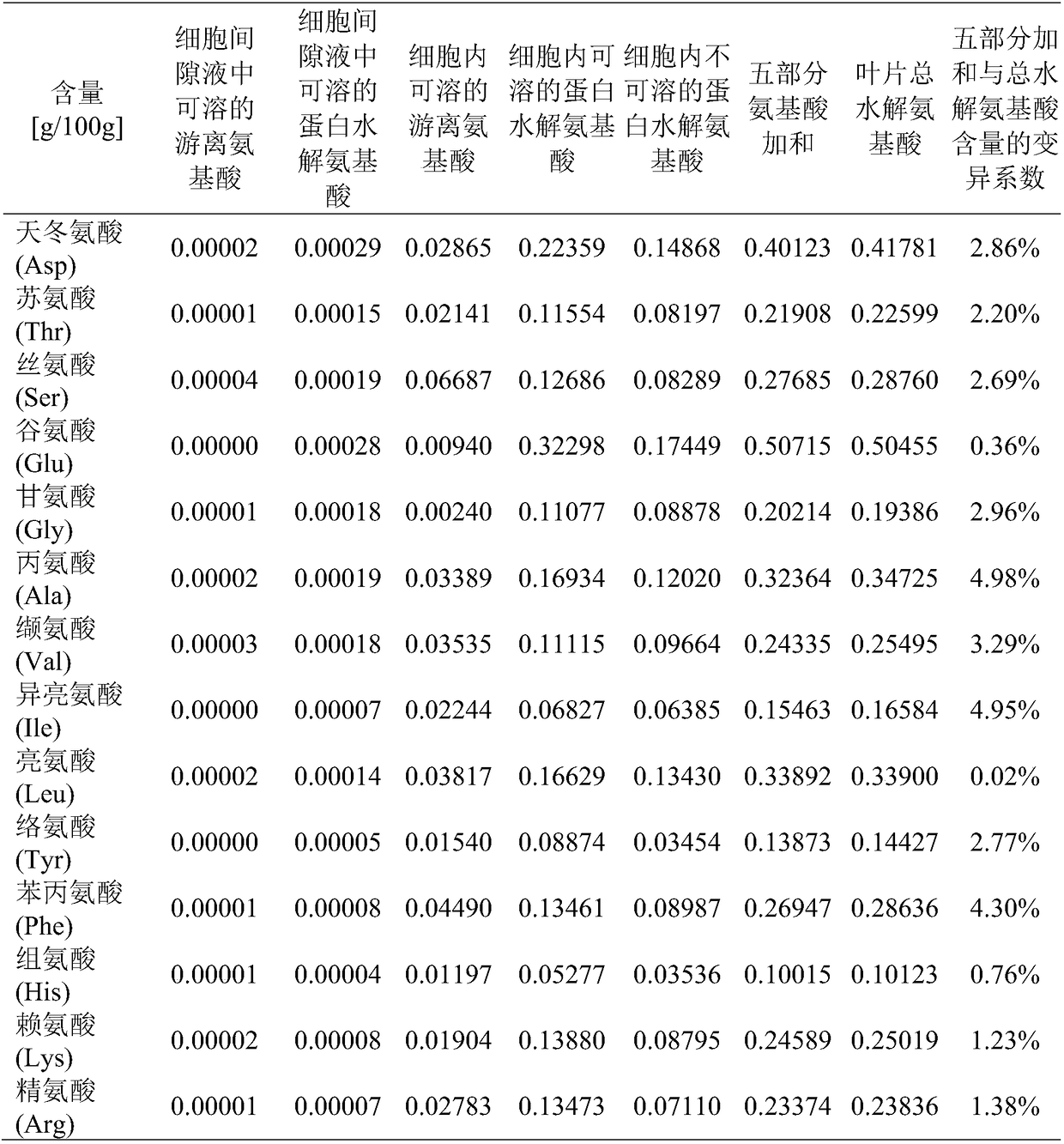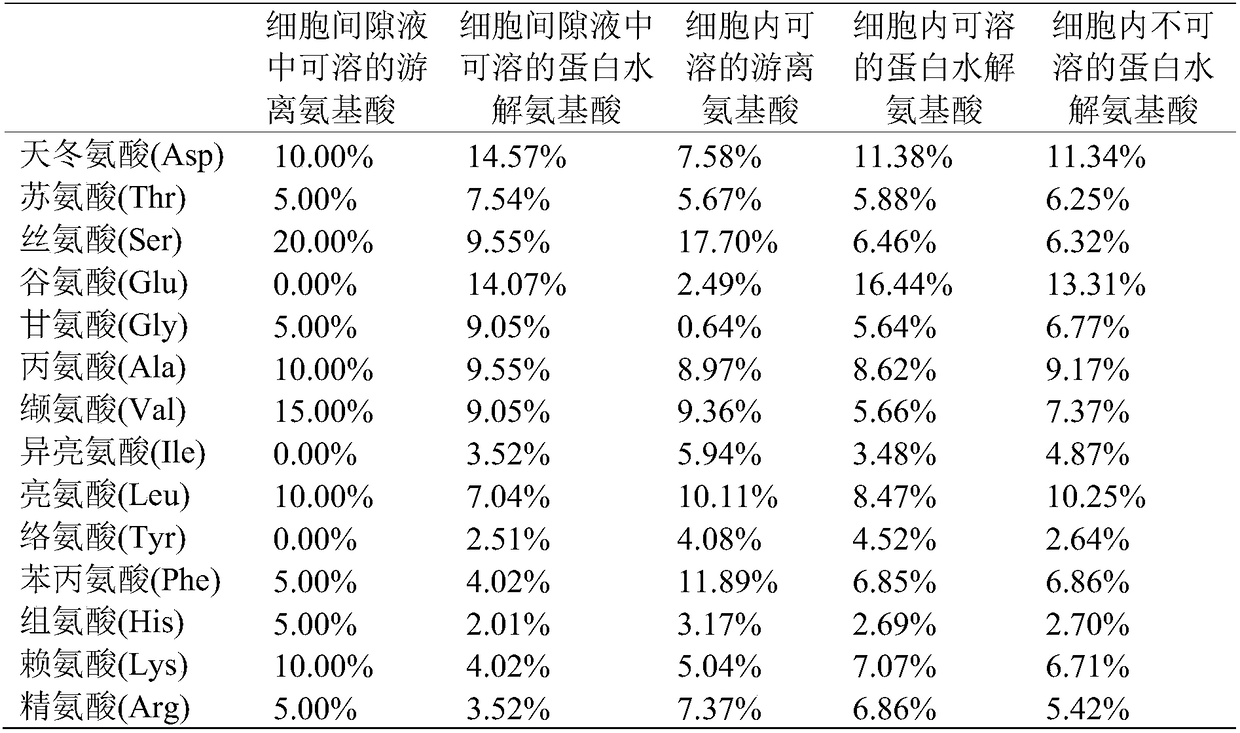Separation and extraction method of amino acid in different forms of monocotyledons
A technology of monocotyledonous plants and extraction methods, applied in the field of amino acid separation and extraction, can solve the problems of effective separation of amino acids that cannot exist, and achieve far-reaching theoretical and practical application values
- Summary
- Abstract
- Description
- Claims
- Application Information
AI Technical Summary
Problems solved by technology
Method used
Image
Examples
Embodiment 1
[0026] Step 1, take wheat leaves, cut off 0.5cm at both ends, then cut the wheat leaves into small sections of 3-4cm to obtain wheat leaf sections, weigh 5-10g of the leaf sections, and set aside. According to needs, 0.3-0.8cm can be cut off at both ends of the wheat leaf.
[0027] Step 2: Rinse the incisions of the leaf segments with ultrapure water 2-3 times, then collect them into bundles, and place them in a centrifuge tube. In this embodiment, a double-layer centrifuge tube is used, and the double-layer centrifuge tube includes a centrifuge tube body, which is arranged inside the centrifuge tube body and has a filter sleeve at the bottom. The sleeve is limited on the upper part of the centrifuge tube body, which is used to limit the blade segment bundle and prevent the blade segment bundle from tumbling upward during the vacuuming process. Add 4°C ultrapure water into the centrifuge tube body until it is 1 cm higher than the leaf section, and vacuum the centrifuge tube f...
Embodiment 2
[0048] According to the method of Example 1, the intercellular fluid and intracellular fluid of wheat leaves, the upper part, the middle part of the stem and the lower part of the stem were separated and extracted respectively, and amino acids in different forms were detected. The content of soluble free amino acids in the intracellular fluid is shown in Table 3.
[0049] Table 3 Comparison table of free amino acid content in intracellular fluid of different parts of wheat
[0050]
[0051] According to the results in Table 3, draw a histogram, see figure 1 . It can be seen from the figure that the proportions of free amino acids in the cells of different parts of wheat plants are different, and the levels of each amino acid in the intracellular fluid of leaves are relatively high.
[0052] In summary, the method of the embodiment of the present invention separates, extracts and detects amino acids in different forms in monocotyledonous plants. The method is accurate and ...
PUM
 Login to View More
Login to View More Abstract
Description
Claims
Application Information
 Login to View More
Login to View More - R&D
- Intellectual Property
- Life Sciences
- Materials
- Tech Scout
- Unparalleled Data Quality
- Higher Quality Content
- 60% Fewer Hallucinations
Browse by: Latest US Patents, China's latest patents, Technical Efficacy Thesaurus, Application Domain, Technology Topic, Popular Technical Reports.
© 2025 PatSnap. All rights reserved.Legal|Privacy policy|Modern Slavery Act Transparency Statement|Sitemap|About US| Contact US: help@patsnap.com



